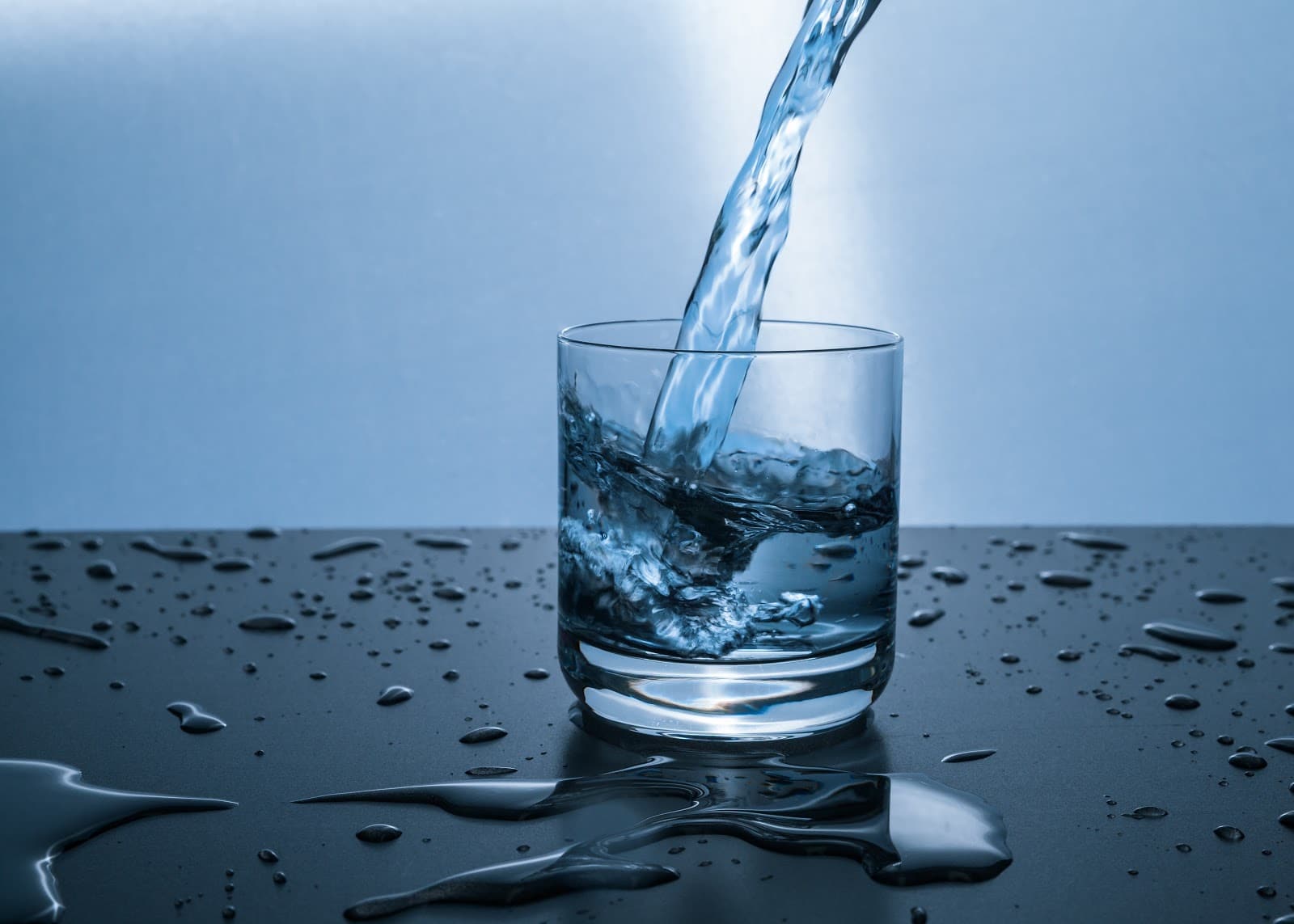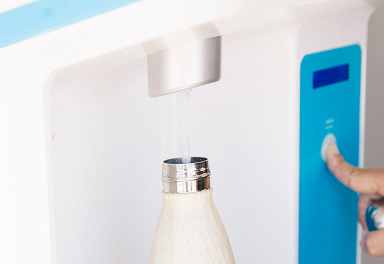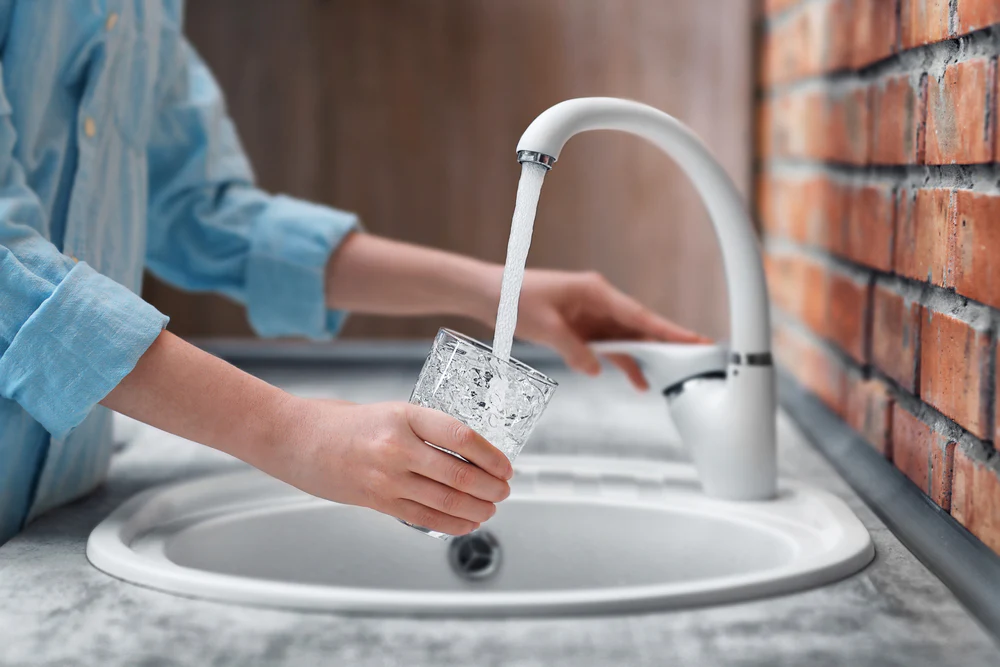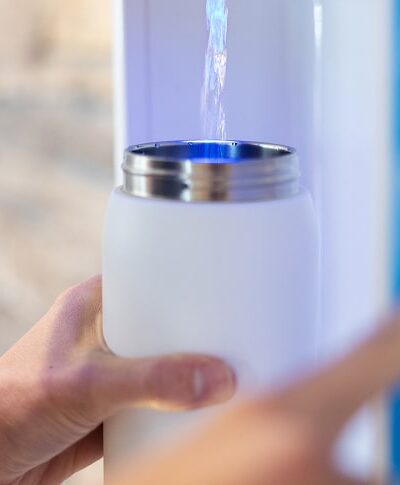The Environmental Protection Agency (EPA) sets forth national primary drinking water regulations for all municipalities to test and preserve their area’s water quality. However, there is a secondary set of proposed guidelines, which are not enforceable and may leave certain tap water sources exposed to more contaminants and water particles than others. These may include everything from chlorine to radon and hydrogen sulfide to heavy metals, among others.
Consuming any of these chemicals have direct implications that puts you at risk for illness and disease. Consider what you’re ingesting when drinking water straight from the tap and learn the value of what an advanced water filtration system can do to support good health.
Radon in Water
According to the EPA, radon can damage lung tissue and increase the risk of lung cancer over the course of your lifetime. If you’ve been drinking tap water that contains this chemical, every sip you take further exposes you to this risk. Although not all public drinking water systems have the same level of it, if the originating source comes from underground, like through an aquifer, there’s a heightened concern the water may have varying amounts of radon.
Currently, there is no federal regulation for the standard levels of radon in water that are allowed. Since people can also be exposed to radon through the air as well, even a small amount found in a water supply can add to the amount people are already inhaling. Plus, unless you search for information through your city’s water board (and the data they make public), you may not be entirely sure what’s in your water at all.
Chlorine in Water
In addition to radon, chlorine in water is something you want to avoid as well. In the early 1900s, chlorine was added to drinking water to destroy germs that led to diseases like typhoid fever and cholera. The Centers for Disease Control and Prevention (CDC) supports current studies that indicate drinking water with small amounts of chlorine does not lead to harmful health effects.
The safety standard as identified by the CDC is chlorine levels of up to 4 milligrams per liter of water. However, it depends on your water company’s specific protocols, as these amounts are not federally regulated. Researchers have linked higher incidences of certain cancers to chlorine found in drinking water.
Data shows that chlorine in water interacts with organic compounds to create trihalomethanes, which encourage the growth of free radicals when ingested. These free radicals can cause damage or destroy vital cells in the body, particularly to the bladder, rectum, and breasts. Other side effects of chlorine exposure may include irritation to skin, eyes, and throat, difficulty breath, and respiratory issues. Also, chlorinated water may carry an unpleasant odor or taste that makes the water unappealing to drink, regardless of the amount it may officially contain.
Hydrogen Sulfide in Water
Among the various water particles you want to avoid is hydrogen sulfide. If your drinking water contains this gas molecule, you’ll instantly be able to tell by the rotten eggs smell it emits. Detection of hydrogen sulfide can come from the original water source itself, but can also be related to problems with the water heater or a home’s water softener. If there is a problem with the tap water, a water treatment or filtration system is necessary to remove or reduce the amount of hydrogen sulfide left in the water.
High concentrations of this chemical can lead to several symptoms and side effects, such as headaches, fatigue, irritability, dizziness, and eye irritation. As the levels become higher or exposure is prolonged, other side effects may be respiratory tract infections, throat irritation, and shortness of breath. Tap water that has a lingering odor may contain hydrogen sulfide, which isn’t safe in any amount. Not to mention the odor and taste is unappealing. The water must be treated and/or the pipes need to be replaced.
Heavy Metals in Water
Depending on the age and quality of your city’s water system, you can be at risk of consuming a variety of heavy metals that pass through to your tap water. The most common include lead, copper, arsenic, and mercury. These heavy metals accumulate in natural water sources that receive runoff waste from industrial, pharmaceutical, and agricultural industries, among others. When left untreated or not treated properly, the presence of heavy metals in drinking water can lead to cancer, kidney damage, skin lesions, and other diseases.
The gravity of water toxicity as a result of heavy metals has been made widely known by real-life events, such as the DuPont lawsuit and the Hinkley groundwater contamination, which highlight two of the many occurrences of contaminated water that take place in municipalities across the U.S. Amounts of heavy metals (and other toxic water particles) that aren’t federally regulated are considered subjective in terms of what is a safe amount for human consumption. With this method of assessment, even if the amount is deemed minimal, prolonged exposure can eventually have detrimental health effects.
Each of these individual particles comes with its own health implications and should be avoided by consumers whenever possible. Tap water that hasn’t gone through a filtration process is still at risk of carrying impurities, contaminants, and other bacteria and viruses that’s harmful to people’s health. Since drinking water regularly is essential to life, it limits how much tap water people do or want to drink. As an alternative, they may turn to other unhealthy beverages or buy plastic bottled water, which is costly to the environment as well as general household budgets.
FloWater removes up to 99% of all of these impurities by transforming tap water into fresh, crisp-tasting water. By using a resource that’s readily available and passing it through several levels of filtration, the water bottle filling station gives people the cleanest, safest water source so they can stay hydrated throughout the day.
Specifically, the second, carbon filter of FloWater’s advanced purification process is specially designed to eliminate these harmful, smaller particles, such as radon, chlorine, and other chemicals that are found floating in regular tap water. This, in combination with six other specialized filters, give FloWater the highest purification level and great taste all in one.
Advanced Purification Process Removes Toxic Water Chemicals
There are water molecules and particles that may make your tap water acceptable to use for washing dishes or cleaning your clothes, but may not be suitable to drink. To maintain hydration, it’s important to have water that is free from all impurities and contaminants. In addition to the carbon filter, which strips out unpleasant odors and taste, as well as heavy metals, hydrogen sulfide, among other individual particles, here is how the six other filters work:
- The sedi-carbon filter removes all dirt, rust, and suspended solids that exist in your tap water or pipes. Even if water is treated at the source, if the pipes are outdated or made with material like lead or copper, these are leached into the water as it makes its way to your faucets.
- After the sedi-carbon and carbon filters, the advanced osmosis filter goes to work. It uses a semi-permeable membrane to capture tiny particles like bacteria, viruses, pesticides, and other dissolved solids commonly found in water sources. This filter is five times more effective than anything else available on the market today.
- Next up is the activated oxygen filter. Activated oxygen serves as a natural sanitization for the tanks and internal system of the water refill station. Additionally, the added level of oxygen in the water is available (and good) for your blood and muscles. Plus, this step improves the taste of the water.
- The fifth filter is the alkaline enhancement. Every day the body works hard to combat the acidity that builds up from the foods we eat, environmental impurities, and stress. This filter adds ten trace minerals to raise the pH level of the water to help neutralize that acidity and relieve some of this pressure from your internal organs.
- The electrolyte enhancement gives the body four essential electrolytes (potassium, sodium, calcium, and magnesium) that are essential to boost immune health and promote bone strength and cell repair. Electrolyte water is especially beneficial for post-workouts as replenishment for higher levels of physical performance and to keep you hydrated.
- Finally, the coconut carbon filter is the last and seventh filter of the full purification process. By using natural coconut husks, any final traces of tiny particles, odors, and tastes are absorbed and removed. The result is highly filtered, delicious-tasting water.
This sophisticated level of purification elevates drinking water, while still using the availability of a tap water supply. No plastic necessary. It gives people confidence in staying hydrated with water that is free of any particle, tastes great, and is dispensed at a perfectly chilled temperature. This premium standard of water quality is met every time regardless of the origin of the tap water that is used.
Drinking water is essential to life. Having the boost of electrolytes and minerals added to water that has been purified through several filters only adds to the benefits FloWater provides that tap water simply cannot. There are several water particles you don’t want to consume that are found in most taps. Avoid these by taking advantage of the FloWater purification system so you can have crisp, refreshing, and most importantly, clean liquid water at your disposal.
Sources:
- https://www.epa.gov/sdwa/drinking-water-regulations-and-contaminants;
- https://www.cdc.gov/healthywater/drinking/public/chlorine-disinfection.html;
- https://www.scientificamerican.com/article/earth-talks-tapped-out/;
- https://www.health.state.mn.us/communities/environment/water/wells/waterquality/hydrosulfide.html;
- https://www.osha.gov/SLTC/hydrogensulfide/hazards.html;
- https://www.ncbi.nlm.nih.gov/pmc/articles/PMC4144270/;




